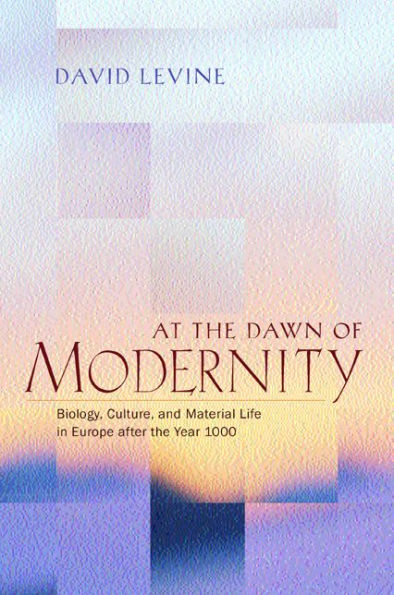At the Dawn of Modernity: Biology, Culture, and Material Life in Europe after the Year 1000
Looking at a neglected period in the social history of modernization, David Levine investigates the centuries that followed the year 1000, when a new kind of society emerged in Europe. New commercial routines, new forms of agriculture, new methods of information technology, and increased population densities all played a role in the prolonged transition away from antiquity and toward modernity.At the Dawn of Modernity highlights both "top-down" and "bottom-up" changes that characterized the social experience of early modernization. In the former category are the Gregorian Reformation, the imposition of feudalism, and the development of centralizing state formations. Of equal importance to Levine's portrait of the emerging social order are the bottom-up demographic relations that structured everyday life, because the making of the modern world, in his view, also began in the decisions made by countless men and women regarding their families and circumstances. Levine ends his story with the cataclysm unleashed by the Black Death in 1348, which brought three centuries of growth to a grim end.
"1110827595"
At the Dawn of Modernity: Biology, Culture, and Material Life in Europe after the Year 1000
Looking at a neglected period in the social history of modernization, David Levine investigates the centuries that followed the year 1000, when a new kind of society emerged in Europe. New commercial routines, new forms of agriculture, new methods of information technology, and increased population densities all played a role in the prolonged transition away from antiquity and toward modernity.At the Dawn of Modernity highlights both "top-down" and "bottom-up" changes that characterized the social experience of early modernization. In the former category are the Gregorian Reformation, the imposition of feudalism, and the development of centralizing state formations. Of equal importance to Levine's portrait of the emerging social order are the bottom-up demographic relations that structured everyday life, because the making of the modern world, in his view, also began in the decisions made by countless men and women regarding their families and circumstances. Levine ends his story with the cataclysm unleashed by the Black Death in 1348, which brought three centuries of growth to a grim end.
63.0
In Stock
5
1

At the Dawn of Modernity: Biology, Culture, and Material Life in Europe after the Year 1000
438
At the Dawn of Modernity: Biology, Culture, and Material Life in Europe after the Year 1000
438Hardcover(First Edition)
$63.00
63.0
In Stock

Product Details
| ISBN-13: | 9780520220584 |
|---|---|
| Publisher: | University of California Press |
| Publication date: | 02/19/2001 |
| Edition description: | First Edition |
| Pages: | 438 |
| Product dimensions: | 6.00(w) x 9.00(h) x 1.10(d) |
| Lexile: | 1370L (what's this?) |
About the Author
From the B&N Reads Blog
